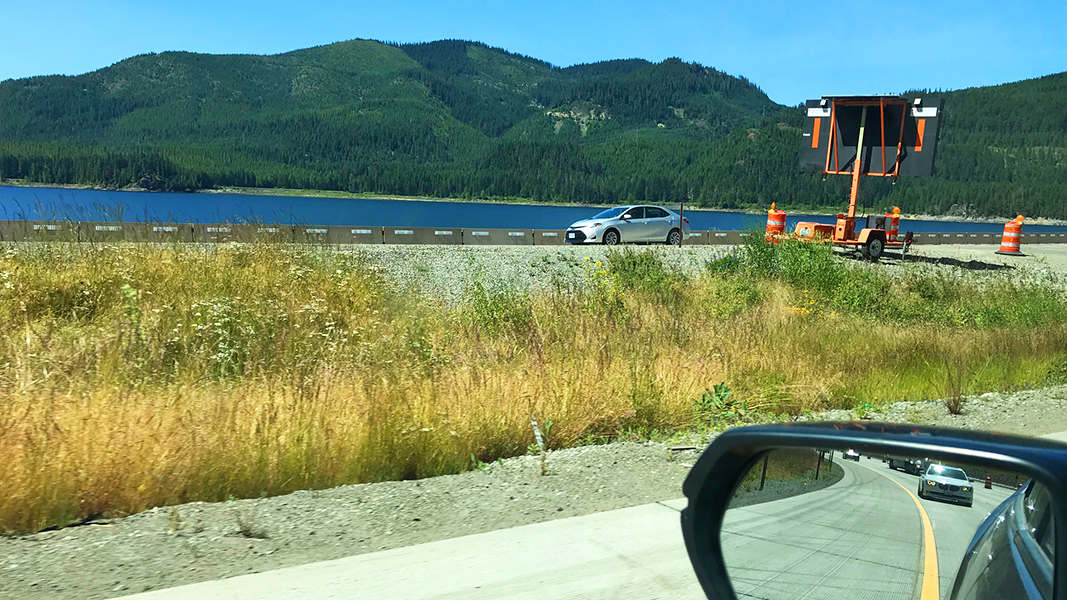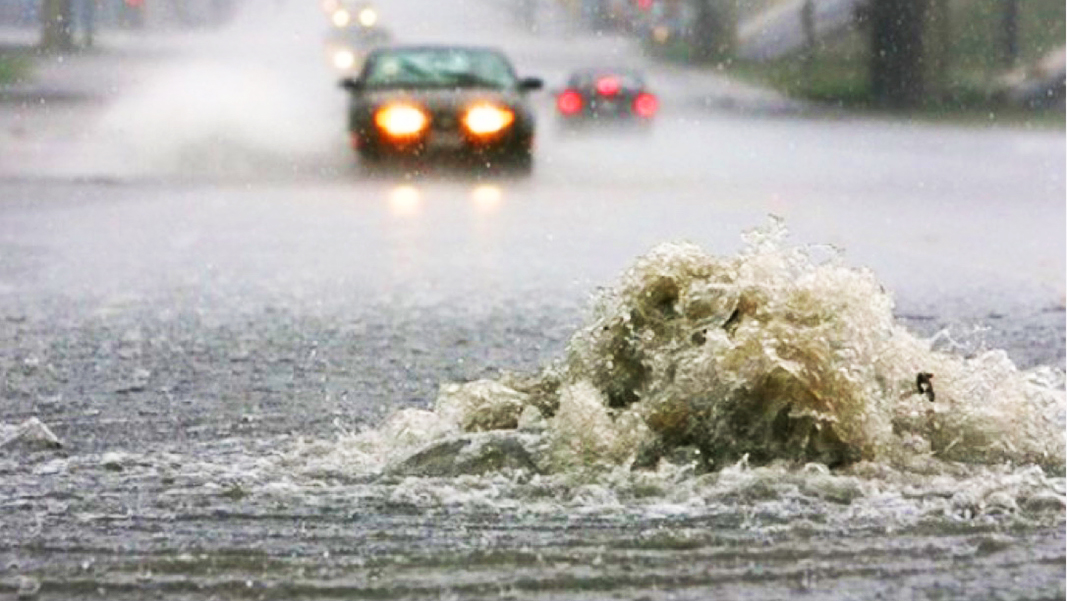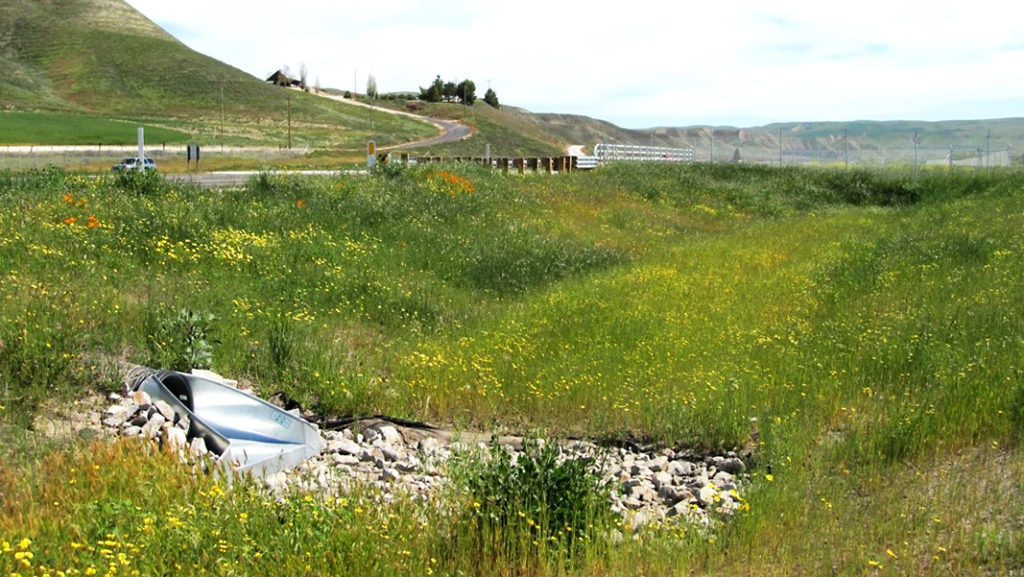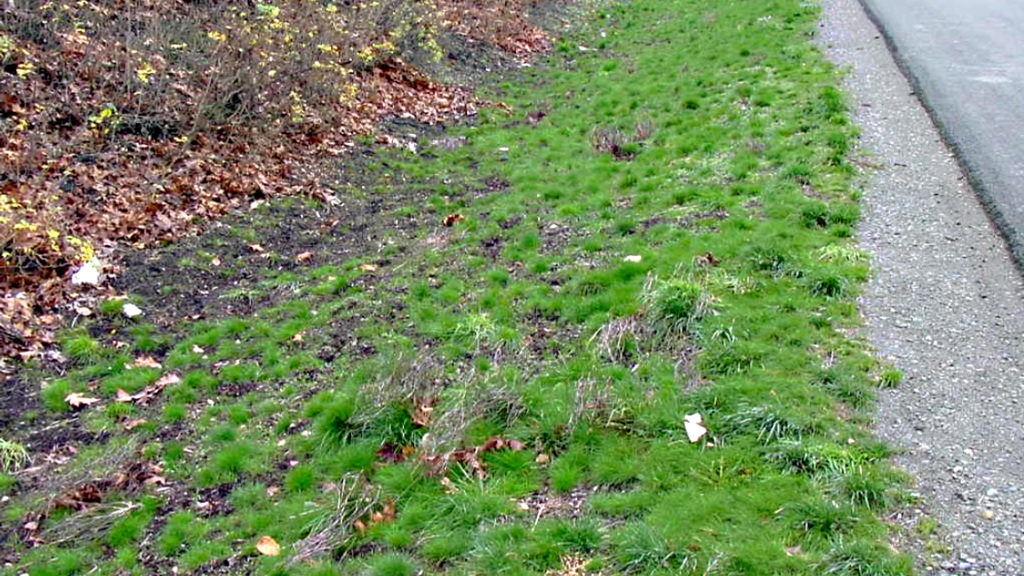
Sally Brown
A few months ago, I wrote a 7-part series on the impact of compost use on carbon emissions. The series was in part a response to Drawdown, a guide to reducing carbon emissions with technologies that we have in hand. I agreed with the authors on the importance of methane avoidance from getting food scraps out of landfills (their basis for carbon credits for composting). But that is so far from the whole story. Columns on compost and irrigation water demand, fertilizer demand, growing trees, and soil carbon storage for regenerative agriculture proved that point.
What all of that missed, however, is the point that much of the compost produced is used not to grace corn fields, but to put on the sides of highways. Highways never enter into the vision of those fighting climate change as anything other than symbols of disaster. Even the romantic version of highways — driving down roads trying to loosen our loads — don’t really involve compost. However, highways are here for the next few decades and maintaining them costs a lot of money. Integrating compost use into how we construct and maintain highways can make them look better, function better, cost less and even reduce carbon emissions.
That dirt on the side of the road — known in Departments of Transportation (DOT) lingo as the right of way — responds to compost the same way that the soil in your lawn or on your field does. Adding compost to highway right of ways decreases bulk density and aids in the formation of stable aggregates. Taken together, those will help rain soak in and prevent dirt from moving off. It will also fertilize vegetation and help the plants, which also hold the soil in place, grow bigger and stronger.
Anyone who has worked with compost knows this. Select individuals in DOTs in select states know it. In order for key people in DOTs across the states to know it we have to first understand the rules that they work with and the language that they speak. If you work for a DOT, you care about limiting runoff, providing a treatment system for storm water and keeping that dirt in place. The Lady Bird Johnson Wildflower Center in Texas works to keep right of ways in bloom with local wildflowers. I’ve even seen small bits of this in Washington state. However, when working with DOTs you can’t start a conversation by expounding on the beauties of native lupin and expect to get very far. Highways are engineered systems and if you want to work with highway engineers as landscape architects have to do, you have to learn their language. Years back Ron Alexander of R. Alexander Associates, did a lot of work on this.
Google Translator For Composter To Highway Engineer
Let me start with my own version of Google translator for composter to highway engineer with a focus on storm water. I have to say here that reading the various documents to get up to speed was mind numbing. I owe a big thanks to Jack Broadbent, a landscape architect with the California Department of Transportation (Caltrans) for making sure I understood what I read.
The U.S. is home to over 4 million miles of roads. Maintenance for most of these miles is the responsibility of states, counties, and cities. In addition to designing roads that can hold up to cars and trucks, highway departments have to design roads that can deal with rain. Water and asphalt are not a match made in heaven. Too much water in the wrong place can damage roads, necessitating repairs. Water on roads (flooding) causes accidents and delays. Water running off roads causes issues with water quality as it can carry a range of pollutants and particulates (code for pieces of dirt). These pollutants and particulates are regulated under the U.S. EPA Clean Water Act’s NPDES Permit Limits (National Pollution Discharge Elimination System).
Managing water costs money and requires infrastructure. Building things in general has an associated carbon footprint. When you are talking about storm water systems for highways, you are considering the monetary cost to build and maintain those systems as well as the associated carbon costs. Storm water treatment systems are typically installed when roadways are built. States have budgets to maintain them and for some states, there is also a budget to upgrade. Each of these systems has a range of permits they have to comply with and performance standards.
It is really important to understand that most of the people who work on highway design and maintenance are much more comfortable sticking their hands into engines than into the soil. If there is a way to design it with concrete, they are all over it. The literature on highway storm water control has been numbing my mind for several days now. I’ll try to inform you while keeping you somewhat alert and awake. The National Academy of Sciences (NAS) breaks these roadway storm water systems down by physical, biological, and chemical processes. Compost is mentioned in some of them. To be considered by a DOT engineer, any potential system has to have the ability to tackle at least most of these without much assistance. Many of these will be very familiar to anyone who has worked with compost for any reason.
The NAS Storm Water Treatment Processes are as follows:
Physical Processes
There are 3 physical processes:
- Settling and sedimentation — letting the particles in the storm water settle out. You can see this in any mud puddle as it dries. The sand (heaviest) settles first, then the silt and finally the clay. The clay particles are the lightest, too small to feel individual particles with your fingers, and form almost a velvet smooth layer on top when they finally settle.
- Compost can help here by increasing the infiltration rate of water into soils or systems. This will reduce the area required for infiltration.
- Filtration and sorption — NAS categorizes these as physical processes even though I would put that sorption into a chemical category. This basically means that any chemicals or metals in the water (think zinc and copper from tires) has to stick onto something to get it out of the water.
- Compost has a high surface area that is also highly reactive. This high surface area provides a type of Velcro to capture metals and nutrients in the storm water solution.
- Flotation — Refers to stuff that is lighter than water and that isn’t supposed to be in water. Oil and grease fall into this category, as do takeout cups from any number of fast food establishments.
- Compost can’t do anything about those cups but the high organic matter content of compost means that it is well suited to absorb organic contaminants like oil and grease.
Biological Processes
This is a general category of cleaning being done by a living thing or things. Plants and microbes can do wonderful things when it comes to cleaning contaminants from storm water. They can take organic contaminants like oil and grease and turn them back into carbon dioxide (a good thing in this case). They can take those nutrients that are such a hazard for aquatic systems and appreciate their true value by using them to grow. They can also take what storm water engineers refer to as heavy metals and rebrand them as essential plant nutrients. Cadmium and lead are the only two that that doesn’t work for, but these are easily adsorbed onto soils, so not a real concern.
- If you’ve seen how compost can bring dead soils to life and supersize plants, it is clear how compost can enhance all of the biological processes in treating storm water.
Chemical Processes
These generally refer to things that soils can do to help. As contaminants — here highway engineers mean nutrients, organic compounds and metals — in the water interact with the storm water system they can get glued onto solids. In engineered systems, these reactive solids can be made of proprietary media. In natural systems, they consist of soil particles and organic matter. Other reactions like oxidation and reduction can also occur. Reduction is what turns nitrate back to nitrogen gas and is best accomplished by hungry microorganisms. Oxidation is what turns grease back into CO2.
- As compost increases the reactive area of soils and enhances plant growth it will also make any storm water system more efficient. Bigger plants mean more demand for water and nutrients. More reactive soils means more adsorption of organics and metals from the storm water.
Traditional Tools
Storm water treatment for highways has traditionally been limited to what can be done on the area that the highway actually occupies, aka, the highway right of way discussed earlier. Within the right of way, there are a range of options when rain hits the asphalt. These include systems like swales and strips, detention basins and sand filters. The construction costs and maintenance costs (Barrett, 2005, updated to 2020 $s) are shown in Table 1.
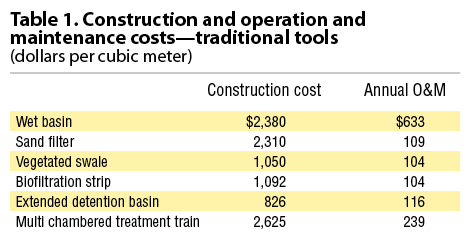 These tools are designed to get the water off the road but stop it from going directly into a lake. They function either by providing a designated place for water to go “down” not “down and out” (wetlands, detention and infiltration basins), or to take stuff out of it before it leaves the roadside (grassed swales and surface sand filters). Each of these systems is designed to treat a certain quantity of water and has associated removal efficiencies for different contaminants.
These tools are designed to get the water off the road but stop it from going directly into a lake. They function either by providing a designated place for water to go “down” not “down and out” (wetlands, detention and infiltration basins), or to take stuff out of it before it leaves the roadside (grassed swales and surface sand filters). Each of these systems is designed to treat a certain quantity of water and has associated removal efficiencies for different contaminants.
Engineers work on these systems and engineers love equations. The amount of water is called the WQV or water quality volume. That WQV is the precipitation depth x ratio of runoff to rainfall x area to be treated. In other words, how much rain times how much of that you expect to run off the surface and how big the surface is. Sometimes surface here is referred to as impervious cover (IC). Each of these systems has costs for building and maintaining.
Low Impact Development
As with urban storm water, low impact development (LID) is gaining acceptance. LID refers to decentralized hydrologic source control. There are a range of terms you’ll see referring to “green” in the context of the interstate. In the UK, it’s SUDS, or sustainable urban drainage systems. In Australia, it’s SQIDs — storm water quality improvement devices. In the U.S., the lingo is BMPs, SCMs (storm water control measures) and LID.
LID on the road has a different meaning than LID for home design. Green for a highway can mean a minimal size footprint or reconfiguration of width, not a change to an environmental treatment method. By reducing lane or shoulder width, the impervious area is also reduced. It can mean taking what you have and trying to make it work better. For highways, LID often means a fancier engineered system that takes up less space than a natural system. For example, I read that a vegetated swale is an example of an engineered system, not LID. A vegetated swale means a dip off the road that has plants growing in it. Water will flow into that dip due to gravity.
How fast the water infiltrates will depend on the quality of the soil in the swale. As we all know, that quality can be changed quickly and for the better with compost. We have to figure out how to explain that vegetated swale is not an engineered system but a LID one, available at a fraction of the price and easy to maintain. We also have to explain that use of composts on all parts of the right of way will reduce a myriad of highway issues. It won’t help for snow removal, but for many types of maintenance, it is the ticket (and not a speeding one).
Sally Brown, BioCycle’s Senior Adviser and long-time Connections columnist, is a Research Professor in the College of the Environment at the University of Washington.


